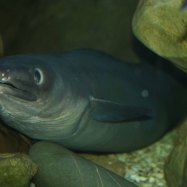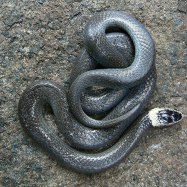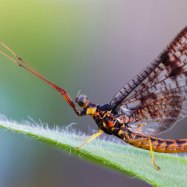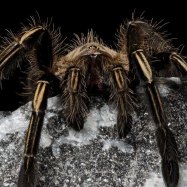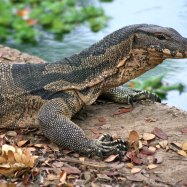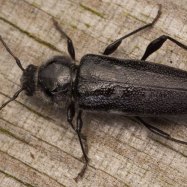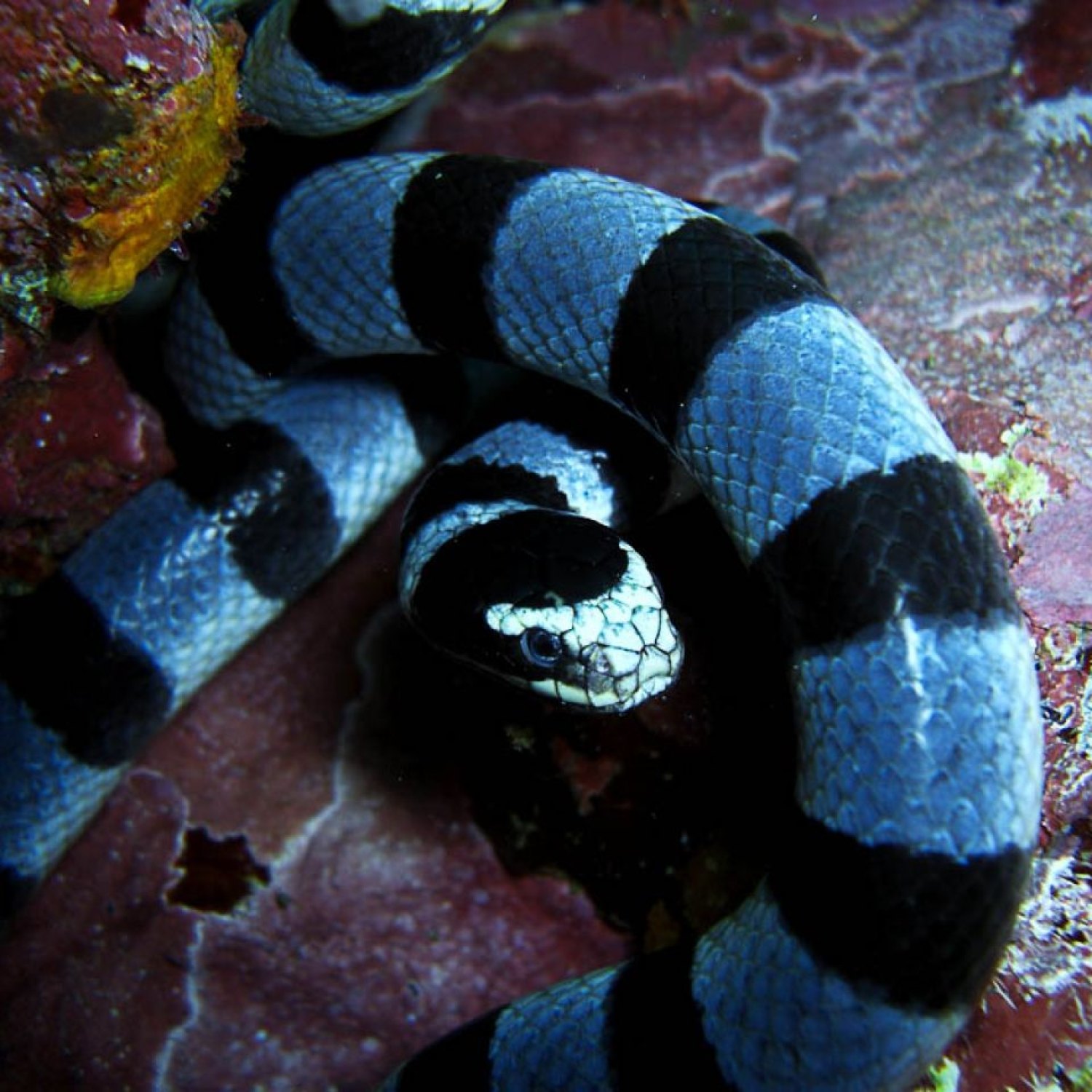
Sea Snake
Most species range from 1 to 3 meters (3 to 10 feet)
Sea snakes are fascinating reptiles that can be found in marine environments worldwide. Most species of sea snakes are long and slender, averaging between 1 to 3 meters in length. They belong to the family Elapidae, which includes other venomous snakes like cobras and mambas. Keep an eye out for these creatures on your next snorkeling or diving adventure, but remember to keep a safe distance as their venom can be deadly.
Animal Details Summary:
Common Name: Sea Snake
Kingdom: Animalia
Habitat: Marine
The Fascinating World of Sea Snakes
As humans, we tend to fear the unknown. It's a primal instinct to protect ourselves from any potential danger. So it's no surprise that anything related to snakes can often send shivers down our spines. But what if we told you that there is a group of snakes that live in the ocean, far away from our daily lives on land? These intriguing creatures are known as sea snakes Sea Snake.The Basics
The scientific name for sea snakes is Hydrophiinae, and they belong to the animal kingdom under the phylum Chordata. They are classified as reptiles in the class Reptilia and the order Squamata, making them closely related to land snakes. However, they have adapted to marine life, making them a unique and fascinating species.Sea snakes are found in the coastal waters of the Indian and Pacific Oceans, although their exact geographical distribution is still being studied. They can be found in various countries in Asia, Australia, and Africa, and they are commonly seen in Indonesia, the Philippines, and Papua New Guinea.
Appearance
At first sight, sea snakes may seem like regular snakes with a slightly different color. However, a closer look reveals their unique characteristics. These snakes have banded patterns on their bodies, which vary in color from species to species. Some may have bold black and white bands, while others may have delicate shades of yellow and blue Silver Labrador.One of the most notable features of sea snakes is their long and slender body shape. This body structure helps them glide through the water effortlessly and swiftly, making them excellent swimmers. They use their flattened tail to propel themselves through the water, just like a fish.
Size Matters
Like many other species, sea snakes come in various sizes. The majority of species range from 1 to 3 meters, with some species growing up to 4 meters (13 feet) in length. However, the largest species, the Hydrophis belcheri, can reach up to 3.5 meters (11.5 feet) in length. Interestingly, male sea snakes are usually smaller than females, with females being the giants of the species.Feeding Habits
As carnivorous reptiles, sea snakes are skilled predators and feed on a variety of marine life. Their diet includes fish, crustaceans, and mollusks. They use their venom to immobilize their prey before swallowing them whole. Unlike land snakes, sea snakes do not constrict their prey.Sea snakes have a specialized digestive system that allows them to consume prey much larger than their head. This is has proven to be an effective hunting strategy, as they can take down larger prey without expending too much energy.
Adaptations for Marine Life
Living in the ocean is by no means an easy feat, especially for animals that are not adapted to marine life. However, sea snakes have made several adaptations that help them survive and thrive in their watery habitat.One of the most fascinating adaptations is their ability to dive and hold their breath for long periods. Some species have been recorded diving for up to 8 hours, while others can stay underwater for up to 3 hours at a time. This impressive ability is possible due to their slow metabolism, which allows them to conserve oxygen.
Sea snakes also have a unique way of drinking seawater to maintain their hydration, as they do not have access to fresh water in their marine environment. They have special glands near their eyes that filter out excess salt from the seawater, allowing them to drink and prevent dehydration.
Another significant adaptation is their ability to see both in and out of the water. They have a clear scale that covers their eyes, acting as a protective layer to keep their eyes moist while underwater. This also enables them to see well in low light conditions, making them expert hunters.
Lifespan and Reproduction
Similar to their land counterparts, sea snakes have a relatively long lifespan, with some species living up to 25 years. However, some larger species may have a shorter lifespan of 10-15 years.Sea snakes are ovoviviparous, meaning that they give birth to live young. The female snakes nourish the eggs inside their bodies until they hatch, and then give birth to one to 20 live babies, depending on the species. The newborn snakes are already fully equipped to survive in their watery home and start hunting for themselves immediately after being born.
Risk of Extinction and Conservation Efforts
With their unique characteristics and adaptations, sea snakes are essential to the marine ecosystem. However, due to human activities, they are facing a severe risk of extinction. One of the main threats to sea snakes is pollution, especially from plastic waste. These creatures often mistake plastic for food, which can result in choking and death.Additionally, destructive fishing practices, such as bottom trawling, also pose a significant threat to sea snakes. These fishing methods often result in the destruction of essential habitats for sea snakes, leading to their decline in numbers.
Fortunately, there are conservation efforts in place to protect these snakes. Organizations like the IUCN Shark and Ray Specialist Group and the Marine Life Conservation Society are working towards educating people about the importance of sea snakes and implementing laws to protect them.
In Conclusion
Sea snakes may not be the first animals that come to mind when we think of marine life. However, they are a crucial part of the ocean ecosystem and have adapted in fascinating ways to survive in their underwater world. Their unique characteristics and behaviors continue to amaze scientists and researchers, and it is our responsibility to protect these remarkable creatures and ensure their survival for future generations to come.

Sea Snake
Animal Details Sea Snake - Scientific Name: Hydrophiinae
- Category: Animals S
- Scientific Name: Hydrophiinae
- Common Name: Sea Snake
- Kingdom: Animalia
- Phylum: Chordata
- Class: Reptilia
- Order: Squamata
- Family: Elapidae
- Habitat: Marine
- Feeding Method: Carnivorous
- Geographical Distribution: Coastal waters of the Indian and Pacific Oceans
- Country of Origin: Various countries in Asia, Australia, and Africa
- Location: Marine environments
- Animal Coloration: Varying colors, typically banded patterns
- Body Shape: Long and slender
- Length: Most species range from 1 to 3 meters (3 to 10 feet)
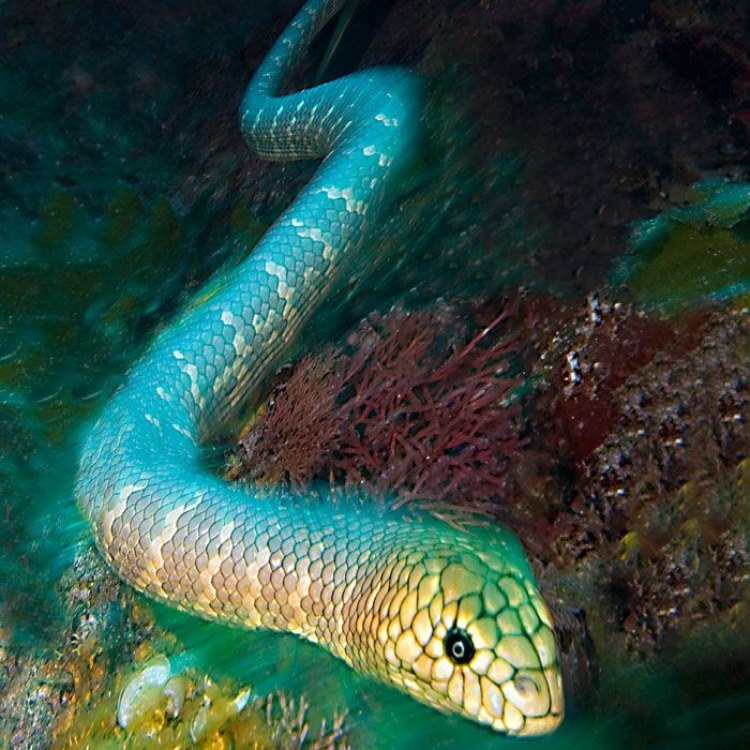
Sea Snake
- Adult Size: Varies between species
- Average Lifespan: 10 to 25 years
- Reproduction: Sexual
- Reproductive Behavior: Mating occurs in the water
- Sound or Call: Generally silent
- Migration Pattern: Seasonal movements
- Social Groups: Solitary, some species form schools for mating
- Behavior: Excellent swimmers, agile and fast
- Threats: Habitat destruction, pollution, bycatch in fishing nets
- Conservation Status: Dependent on the species, some are listed as vulnerable or endangered
- Impact on Ecosystem: Important predators of marine ecosystems, help control populations of prey animals
- Human Use: Some species may be used for their skin, venom, or meat
- Distinctive Features: Dual respiratory system, thickened scale shields over the eyes, paddle-like tail
- Interesting Facts: Sea snakes are venomous, but they are generally not aggressive towards humans
- Predator: Sharks, larger fish, and seabirds
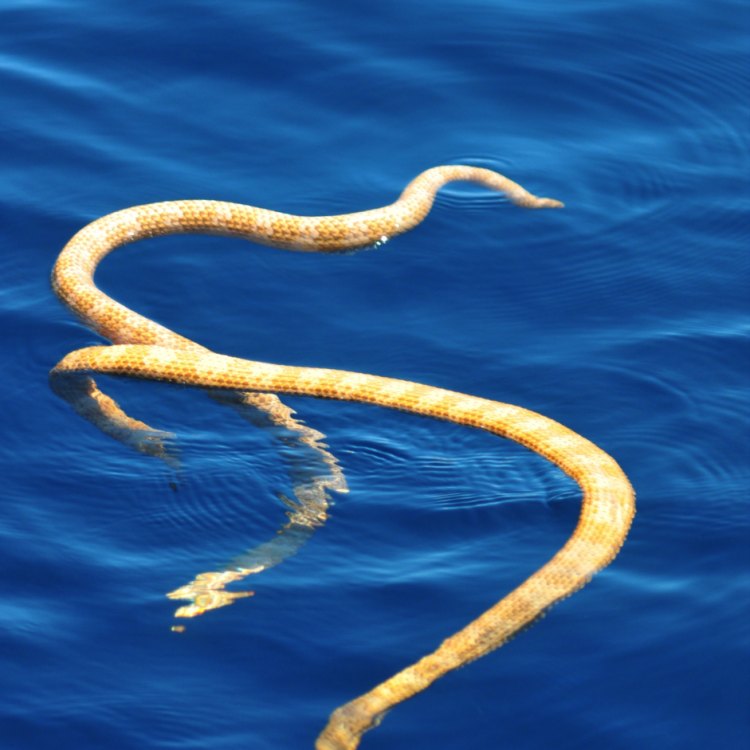
Hydrophiinae
The Elusive and Fascinating Sea Snake
The vast and diverse oceans of our planet are home to countless fascinating creatures. Among them, the sea snake stands out with its unique features and behavior. These stunning reptiles are found in the Indian and Pacific Oceans, as well as certain areas of the Atlantic. They are highly adapted to the marine environment and are an important part of the ocean ecosystem PeaceOfAnimals.Com. In this article, we will delve deeper into the world of the sea snake and explore its distinctive features, behavior, threats, and importance for both humans and the ocean.Adult Size and Average Lifespan
The size of sea snakes varies greatly between species. Some can reach up to three meters in length, while others are as small as one meter. Interestingly, sea snakes have the same body shape as their terrestrial cousins, the land snake, but with paddle-like tails for swimming. This unique adaptation allows them to move effortlessly through the water with speed and agility.
In terms of lifespan, sea snakes have a relatively long life span, with an average of 10 to 25 years. However, some species have been reported to live up to 30 years in the wild.
Reproduction and Social Behavior
Sea snakes are sexually reproductive, which means they require a male and a female to mate and produce offspring. Mating typically occurs in the water, and males use specialized organs called hemipenes to transfer sperm to the female Southern Flannel Moth. This behavior is usually observed during the breeding season, which varies between species but often coincides with the monsoon season.
Despite being solitary animals, some sea snake species form schools during the mating season, where they gather to find suitable mates. This is also beneficial for females, as it minimizes their chance of encountering a predatory male.
Behavior and Predators
Due to their long and slender bodies, sea snakes are excellent swimmers. They move through the water with grace and are known for their speed and agility. Unlike most snakes, sea snakes have a dual respiratory system, which means they can breathe both on the surface and underwater. They also have thickened scale shields over their eyes, which protects them from debris and allows for clear vision.
Although sea snakes are venomous, they are not aggressive towards humans. In fact, they are quite shy and elusive creatures. They only use their venom for hunting and defense, and incidents of sea snake bites on humans are rare. However, their main predators are sharks, larger fish, and seabirds, who are not affected by their venom and often prey on sea snakes.
Threats and Conservation Status
Like many marine animals, sea snakes are facing threats to their survival. One of the biggest threats is habitat destruction, particularly in areas where they are endemic. Pollution from oil spills and litter also poses a significant threat to their existence, as well as being caught as bycatch in fishing nets.
The conservation status of sea snakes varies among species. Some, like the Tasmanian sea snake, are listed as vulnerable, while others, like the Horned Sea Snake, are endangered. Conservation efforts are being made to protect their habitats and prevent unnecessary harm, but more needs to be done to ensure their survival.
Impact on Ecosystem
Despite being shy and elusive, sea snakes play a crucial role in the marine ecosystem. As top predators, they help control the population of prey animals, which is vital for the balance of the food chain. Their presence also influences the behavior of other marine animals, such as fish and crustaceans, which have evolved to avoid areas where sea snakes are known to inhabit.
Moreover, sea snakes are important indicators of the health of the oceans. As air-breathing creatures, changes in their population and behavior can signal a decline in water quality and the health of the marine ecosystem.
Human Use and Interesting Facts
For centuries, sea snakes have been used for various purposes by humans. Some species, such as the olive sea snake, contain a potent venom that is used in the production of antivenom to treat snake bites. In some countries, their skin is also used to make leather goods, while their meat is considered a delicacy. However, overexploitation for these purposes has contributed to the decline of certain sea snake populations.
Despite their venomous nature, there are interesting facts about sea snakes that often go unnoticed. For example, they are generally silent creatures and do not make any calls or vocalizations. They also have the ability to drink seawater and excrete the salt through special glands in their tongues, which allows them to live in the ocean.
In Conclusion
In summary, the sea snake is a fascinating and elusive creature that is an important part of the marine ecosystem. With their unique features and behavior, they have adapted to thrive in the ocean environment and play a crucial role in the balance of marine life. However, they face numerous threats, and more efforts are needed to ensure their continued existence. By educating ourselves and taking steps to protect our oceans, we can help conserve the sea snake and all the other amazing creatures that call the ocean their home.
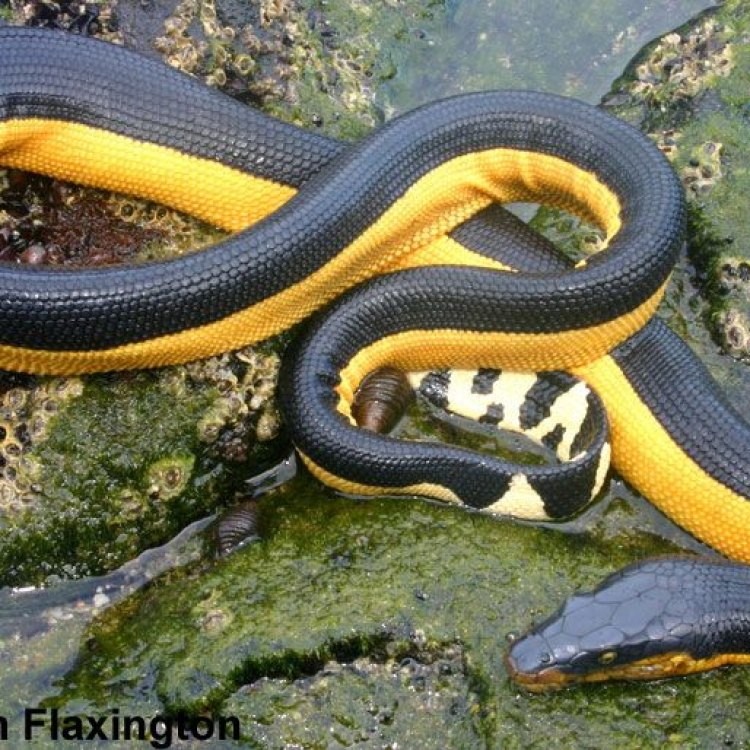
The Fascinating World of Sea Snakes
Disclaimer: The content provided is for informational purposes only. We cannot guarantee the accuracy of the information on this page 100%. All information provided here may change without prior notice.



